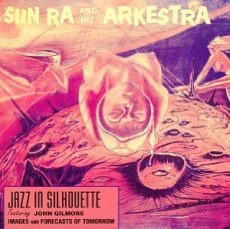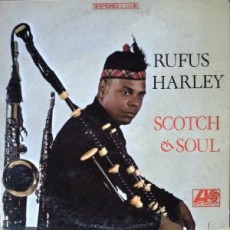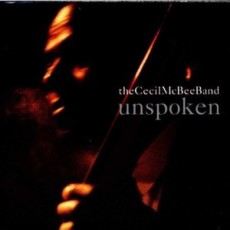
Daily Dose Of Jazz…
Sun Ra was born Herman Poole Blount in Birmingham, Alabama on May 22, 1914 and as a child was a skilled pianist. By twelve he was writing original songs and could sight read sheet music. With Birmingham being an important stop for touring musicians, during his childhood he was able to see famed musicians like Fletcher Henderson, Duke Ellington and Fats Waller.
By his teenage years he was producing from memory full transcriptions of big band songs he had heard and began playing semi-professional solo piano in ad hoc jazz bands. Attending Birmingham Industrial High School he took lessons the tutelage of John T. “Fess” Whatley, a demanding disciplinarian and producer of many professional musicians.
Claiming that he was of the “Angel Race” and not from Earth, but from Saturn, Sun Ra developed a complex persona of “cosmic” philosophies and lyrical poetry that made him a pioneer of “afro-futurism” as he preached awareness and peace above all. He abandoned his birth name and took on the name and persona of Sun Ra (Ra being the ancient Egyptian god of the sun).
From the mid-1950s to his death, Sun Ra led “The Arkestra”, an ensemble with an ever-changing lineup and names, asserting that the ever-changing name of his ensemble reflected the ever-changing nature of his music. His mainstream success was limited, but Sun Ra was a prolific recording artist and frequent live performer with music ranged from keyboard solos to big bands of over 30 musicians and music touching on virtually the entire history of jazz, from ragtime, swing, bebop, free improvisation, electronic and space music.
Sun Ra had several music periods during his lifetime – late 30s creating a conservatory workshop in his family home, conscientious objector during the war years, Chicago playing blues and jazz with Fletcher Henderson, Coleman Hawkins and Stuff Smith, New York Monday night gig at Slug’s Saloon and praise from Dizzy Gillespie and Thelonious Monk, and Philadelphia that would be the base of operations for the Arkestra until his death.
Sun Ra known for his “cosmic philosophy, musical compositions and performances was inducted into the Alabama Jazz Hall of Fame in 1979. The prolific Jazz composer, bandleader, piano and synthesizer player, poet and philosopher passed away on May 30, 1993, at 79.

Daily Dose Of Jazz…
Willis Leonard Holman was born on May 21, 1927 in Olive, California. Known to the jazz world as Bill Holman, he has worked primarily in the jazz idiom as a songwriter, conductor, composer, arranger and saxophonist.
Through his acquaintance with composer Gene Roland he was introduced to Stan Kenton and in the early fifties was hired as a tenor sax player. Beyond his sax playing, Holman had the ability to integrate counterpoint and dissonance in subtle yet distinctive ways thus making Kenton’s band swing. He became Kenton’s chief arranger writing much of Kenton’s late 1950s repertoire and continued to write for Kenton, on and off, throughout the 1960s and 70s.
In addition to working for Kenton, Bill provided charts for Woody Herman, Doc Severinsen, Buddy Rich, Terry Gibbs, Count Basie, Gerry Mulligan, The Association, The Fifth Dimension and Natalie Cole among others. In 1975 he formed his own band that continues to perform in the U.S. and worldwide. In 1997 he won a Grammy for his recording Brilliant Corners: The Music of Thelonious Monk. He continues to create his legacy in jazz.

Daily Dose Of Jazz…
Rufus Harley, Jr. was born near Raleigh, North Carolina on May 20, 1936 of mixed Cherokee and African ancestry but at an early age his mother relocated with him to North Philadelphia, Pennsylvania. At age 12 he began playing the C melody saxophone and the trumpet and ten years later he was studying saxophone, flute, oboe and clarinet. His interest in the bagpipes came when he saw the Black Watch perform during President Kennedy’s funeral in 1963. Traveling to New York he bought a set in a pawnshop for $120 and quickly adapted it to the idiom of jazz, blues and funk.
Harley made his Scottish great Highland bagpipe debut in 1964 and over the next five years released four albums for Atlantic records and recorded as a sideman during that period and into the seventies with Herbie Mann, Sonny Stitt, and Sonny Rollins. He would later record with Laurie Anderson on “Big Science” in 1982, The Roots album “Do You Want More?!!!??!” in 1995 as a result of an appearance on the Arsenio Hall show.
Rufus often wore Scottish garb including kilt and a Viking style horned helmet. After watching him on television, a Scottish family gave him his MacLeod tartan, which he wore for the rest of his life. His bagpipe technique was unorthodox in that he placed the drones over his right shoulder instead of his left and favored a B-flat minor key.
Residing in the Germantown neighborhood of Philadelphia, when not working as a maintenance worker for the housing authority, Rufus gave presentations in area public schools, toured around the world, appeared on television shows like “What’s My Line” and “To Tell The Truth”, and had small roles in films “You’re A Big Boy Now” and “Eddie and the Cruisers”. In addition to bagpipes when recording, he would play tenor saxophone, electric soprano saxophone and flute.
Rufus Harley passed away at Philadelphia’s Albert Einstein Medical Center on July 31, 2006 of prostate cancer. In memoriam a documentary titled “Pipes of Peace” gives an intimate profile and a posthumous retrospective “Courage – The Atlantic Recordings containing all four albums was released in a limited edition.

Daily Dose Of Jazz…
Born May 19, 1935 in Tulsa, Oklahoma bassist Cecil McBee studied clarinet at school before switching to the bass at 17 and began playing in local clubs. After matriculating through Ohio Central State University with a degree in music, he spent two years in the army conducting the band at Fort Knox.
Cecil McBee was working with Dinah Washington by 1959, three years later moved to Detroit and worked with Paul Winters folk-rock band, then moved to New York in the mid-60s where his jazz career took an earnest turn. He began working with Miles Davis, Andrew Hill, Sam Rivers, Jackie McLean, Wayne Shorter, Charles Lloyd, Yusef Lateef, Keith Jarrett, Freddie Hubbard, Wood Shaw and Alice Coltrane all by the time 1972 arrived.
In 1975 he started his own group and made a number of recordings, became a member of the group Almanac but is best known for his as a sideman over the past several decades. One of the most influential bassist in jazz, Cecil McBee teaches at the New England Conservatory in Boston, Massachusetts and remains one of post-bops versatile bassist who delivers a rich, full-bodied tone.
More Posts: bass

From Broadway To 52nd Street
Lady In The Dark took the stage at the Alvin Theatre on January 23, 1941. The musical starred Gertrude Lawrence, McDonald Carey, Dianne Kaye and Victor Mature with the music composed by Kurt Weill and lyrics by Ira Gershwin. It ran for four hundred and sixty-seven performances. Beyond its Broadway run, Lady In The Dark would b staged in the United Kingdom in 1981, was also made into a 1944 film and a live 1954 television special. Except for the final song, all the music in the play is heard in three extended dream sequences: the Glamour Dream, the Wedding Dream, and the Circus Dream which, to some extent, become three small operettas integrated into a straight play. The final song, “My Ship”, which went on to become a jazz standard, functioned as a leitmotif for Liza’s insecurity: as each dream commences, a snippet of the tune is heard, as it is a haunting melody which Liza recognizes but cannot name, or sing with words, until her anxiety is resolved.
The Story: The protagonist, Liza Elliott, is the unhappy albeit successful editor of a fashion magazine, Allure, who is undergoing psychoanalysis. Relating a dream to her analyst, all the familiar male figures in her life appear in her dream but they act in unfamiliar ways. By recounting her dream, Liza realizes that her father’s disdain for her as a child has warped her relations with men.
Broadway History: Innovations to Broadway would come in 1943 with Rodgers & Hammerstein’s Oklahoma, which integrated music, song, and dance with a detailed plot. West Side Story followed in these footsteps in 1957 by introducing serious themes, causing the genre to be called simply “musicals”. In 1967 Hair would herald the rock musical to prominence.
Sponsored By
www.whatissuitetabu.com



